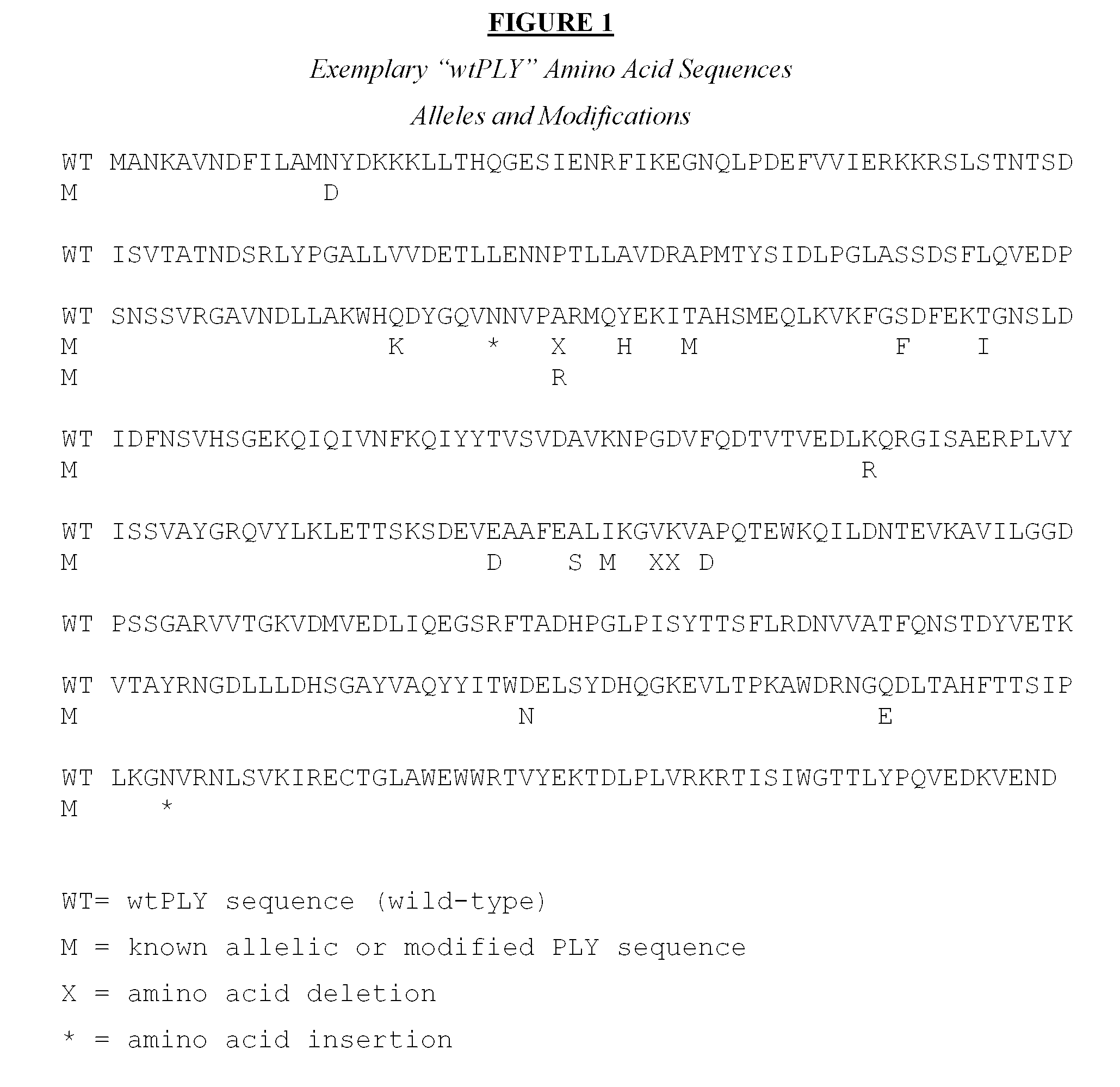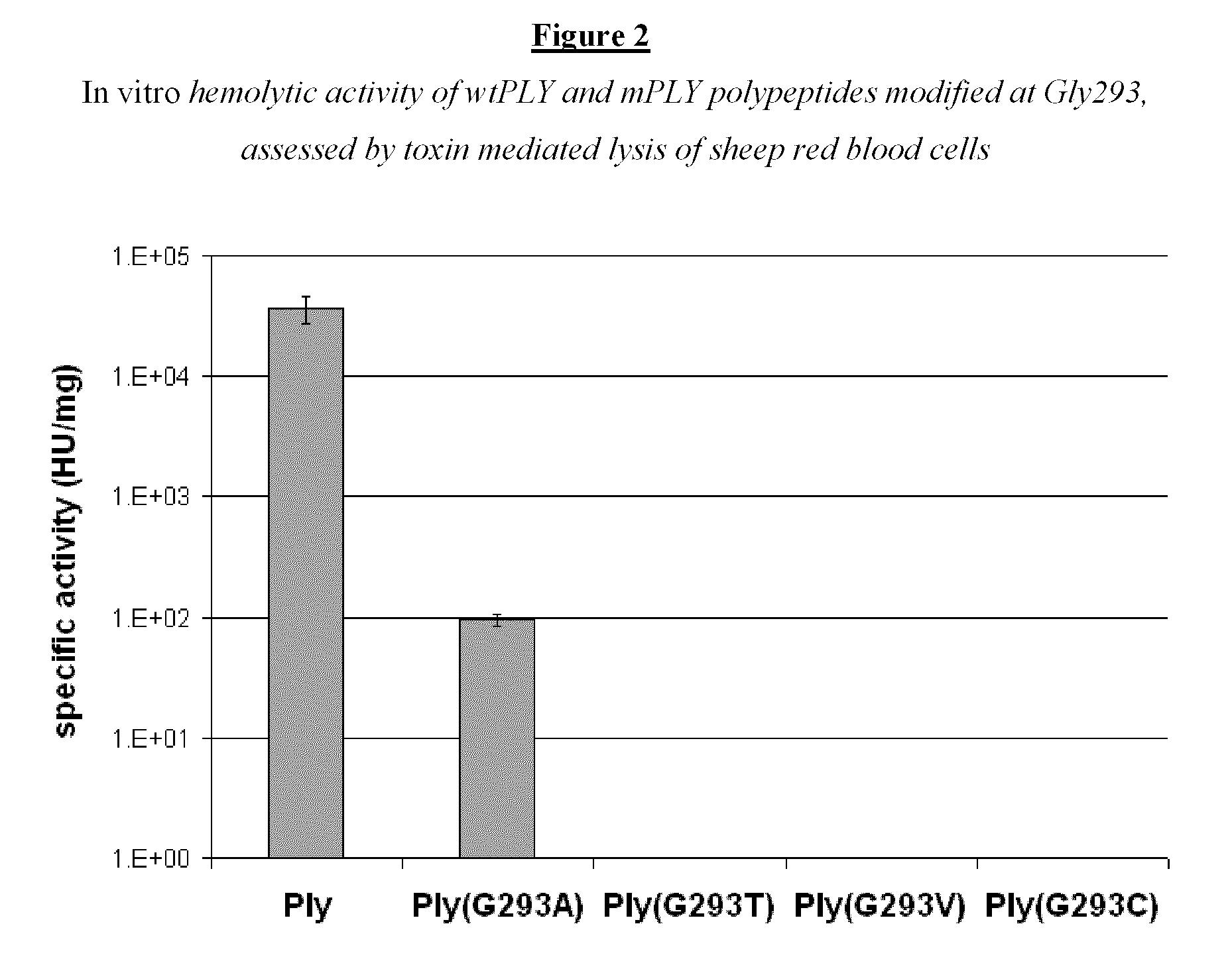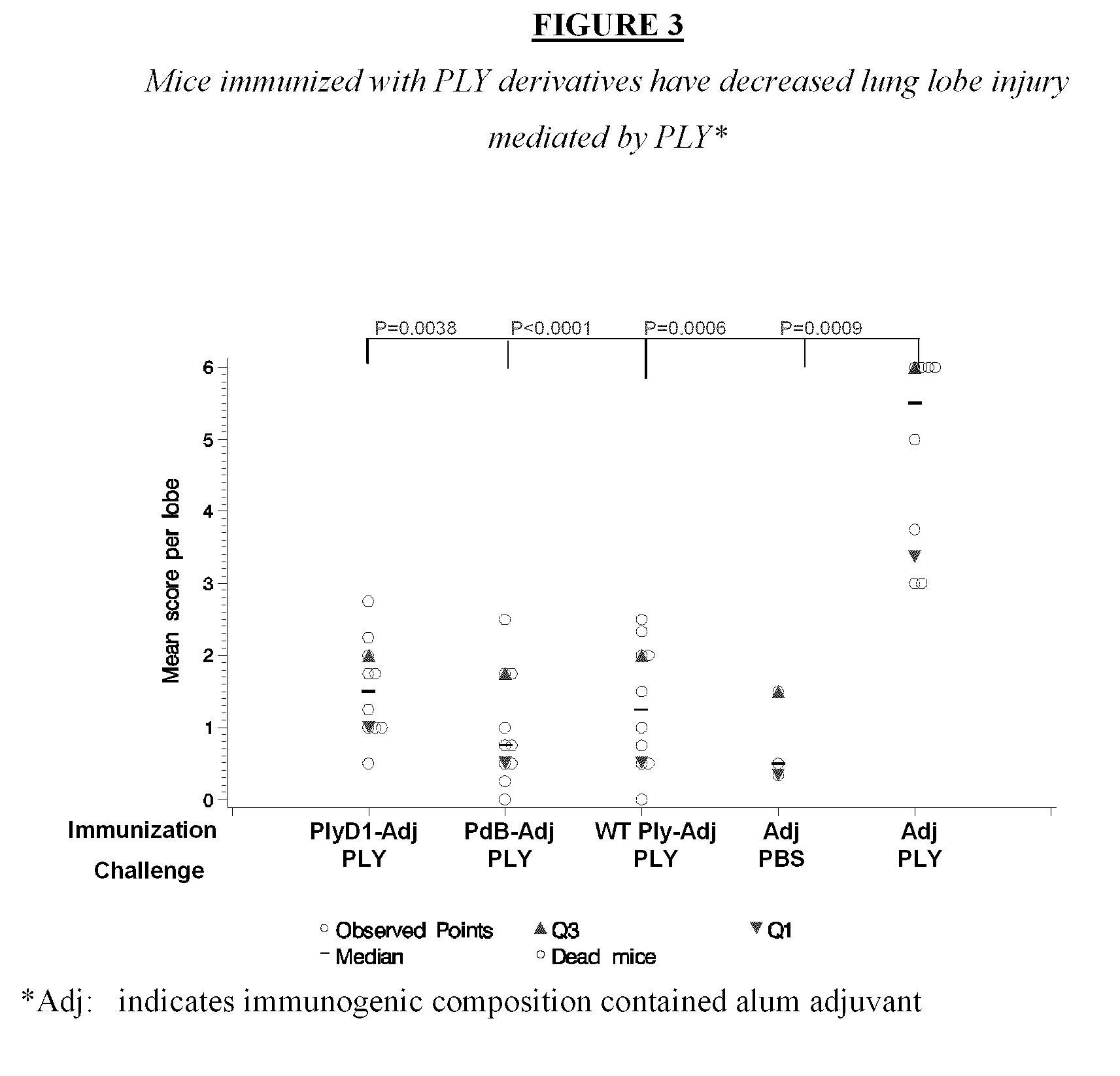Modified Streptococcus pneumoniae pneumolysin (PLY) polypeptides
a technology of pneumolysin and streptococcus pneumoniae, which is applied in the direction of peptides, drug compositions, immunological disorders, etc., can solve the problems of poor immunologic memory, significant impact on health care costs in developed countries, and significant waning of immunity, so as to inhibit the hemolytic activity of wtply and reduce the effect of hemolytic activity
- Summary
- Abstract
- Description
- Claims
- Application Information
AI Technical Summary
Benefits of technology
Problems solved by technology
Method used
Image
Examples
example 1
Generation of Expression Plasmids for wtPLY and His-Tagged wtPLY
[0086]The ply gene encoding wtPLY was cloned by PCR using primers Spn001 (CATGCCATGGCAAATAAAGCAGTAAATGAC; SEQ ID NO. 45) and Spn002 (CAGCCGCTCGAGCTAGTCATTTTCTACCTTATCCTC; SEQ ID NO. 46) from S. pneumoniae strain R36A (SEQ ID NO. 1, GenBank Accession No. M17717). The PCR product was digested with restriction enzymes NcoI and XhoI and cloned into plasmid pTrcK. Plasmid pTrcK is a kanamycin-resistant derivative of plasmid pTrcHis2 (Invitrogen). The plasmid thus generated (pBM46) was used for expression of wtPLY (producing a non-tagged PLY polypeptide) under control of the trc promoter. The DNA sequence of the amplicon was identical to the published ply sequence shown in SEQ ID NO. 1), encoding the deduced amino acid sequence shown in SEQ ID NO. 2. The wtPLY-encoding nucleic acid was then transferred into pET-28a (EMD Biosciences Cat. No. 69864-3) (NcoI-XhoI), resulting in plasmid pJMS102 (providing non-tagged wtPLY express...
example 2
Generation of Expression Plasmids for PLY (T65C, G293C, C428A) (PlyD1) and His-Tagged PlyD1
[0087]Plasmid pJMS112 from Example 1 was used as the template for site-directed mutagenesis to modify the expressed PLY polypeptide. Site-directed mutagenesis was performed using the QuickChange Multi Site-Directed Mutagenesis kit as per the manufacturer's instructions (Agilent Technologies, Stratagene Products Division, La Jolla, Calif.). The following modifications were introduced into the PLY encoding nucleotide sequence:
[0088]the codon for Thr65 was changed from ACC to TGC, encoding cysteine (C) in place of threonine (T) (T65C);
[0089]the codon for Gly293 was changed from GGG to TGC, encoding cysteine (C) in place of glycine (G) (G293C); and,
[0090]the codon for Cys428 was changed from a TGT to GCT, encoding alanine (A) in place of cysteine (C) (C428A).
[0091]The plasmid resulting from the site-directed mutagenesis was designated pJAY7, and provided for expression of His-tagged PLY (T65C, G29...
example 3
Purification of PlyD1 PLY (T65C, G293C, C428A)
[0093]To obtain larger quantities of the PlyD1 (SEQ ID NO. 44; T65C, G293C, C428A) was expressed as a recombinant protein (˜55 kDa) in pET30A plasmid using an E. coli expression system. The E. coli expressed recombinant PlyD1 protein was grown in a 20-L fermentor. The cells were homogenized at high pressure to release the soluble PlyD1 and diafiltered in Tris buffered saline to produce a crude extract of PlyD1. The crude PlyD1 extract was 0.2 um filtered prior to use. The filtered, crude extract was run through the strong anion exchange Giga Cap Q-650 M column (Tosoh Biosciences). Unbound contaminant proteins were removed in the flow-through and chased with equilibration buffer (20 mM Tris-HCl, pH 8.5) An intermediate wash step was performed using equilibration buffer containing 100 mM NaCl. Bound PlyD1 was eluted with 20 mM Tris-HCl, pH 8.5 containing 250 mM NaCl, PlyD1 material recovered from this column chromatography step was then co...
PUM
| Property | Measurement | Unit |
|---|---|---|
| concentration | aaaaa | aaaaa |
| period of time | aaaaa | aaaaa |
| time | aaaaa | aaaaa |
Abstract
Description
Claims
Application Information
 Login to View More
Login to View More - R&D
- Intellectual Property
- Life Sciences
- Materials
- Tech Scout
- Unparalleled Data Quality
- Higher Quality Content
- 60% Fewer Hallucinations
Browse by: Latest US Patents, China's latest patents, Technical Efficacy Thesaurus, Application Domain, Technology Topic, Popular Technical Reports.
© 2025 PatSnap. All rights reserved.Legal|Privacy policy|Modern Slavery Act Transparency Statement|Sitemap|About US| Contact US: help@patsnap.com



